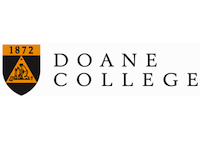Below is a summary of the abstract you submitted. Presenting author(s) is shown in bold.
If any changes need to be made, you can modify the abstract or change the authors.
You can also download a .docx version of this abstract.
If there are any problems, please email Dan at dar78@pitt.edu and he'll take care of them!
This abstract was last modified on April 4, 2023 at 2:52 p.m..

We extracted our phage ClamChowder from Palmyra, Nebraska in August of 2022. The phage was found from an enrichment of the soil sample within the area and cultured on the host bacteria Gordonia terrae. The structure of the phage was examined using Transmission Electron Microscopy (TEM) which revealed that the phage was a siphovirus. This phage is temperate and belongs to the DC1 subcluster. ClamChowder has a genome length of about 59,514 base pairs, which is similar in length to most other annotated DC1 genomes. Auto-annotation predicts 99 genes, with few differences from other DC1s’ genes, including three predicted orphams. Using DNAMaster, Phamerator, Starterator, and BLAST data, we examined the predicted ORFs for coding potential and possible start sites. Future work will include calling the functions of genes. The second phage we will start annotations on is a Gordonia phage called BearBQ. It was found in Crete, Nebraska outside of Hansen Hall. Phage BearBQ which is a part of the DN subcluster, is a temperate phage and a siphovirus. It has a length of 55,074 base pairs. Auto-annotation predicts 101 genes for this phage. More information will be provided in the future.
